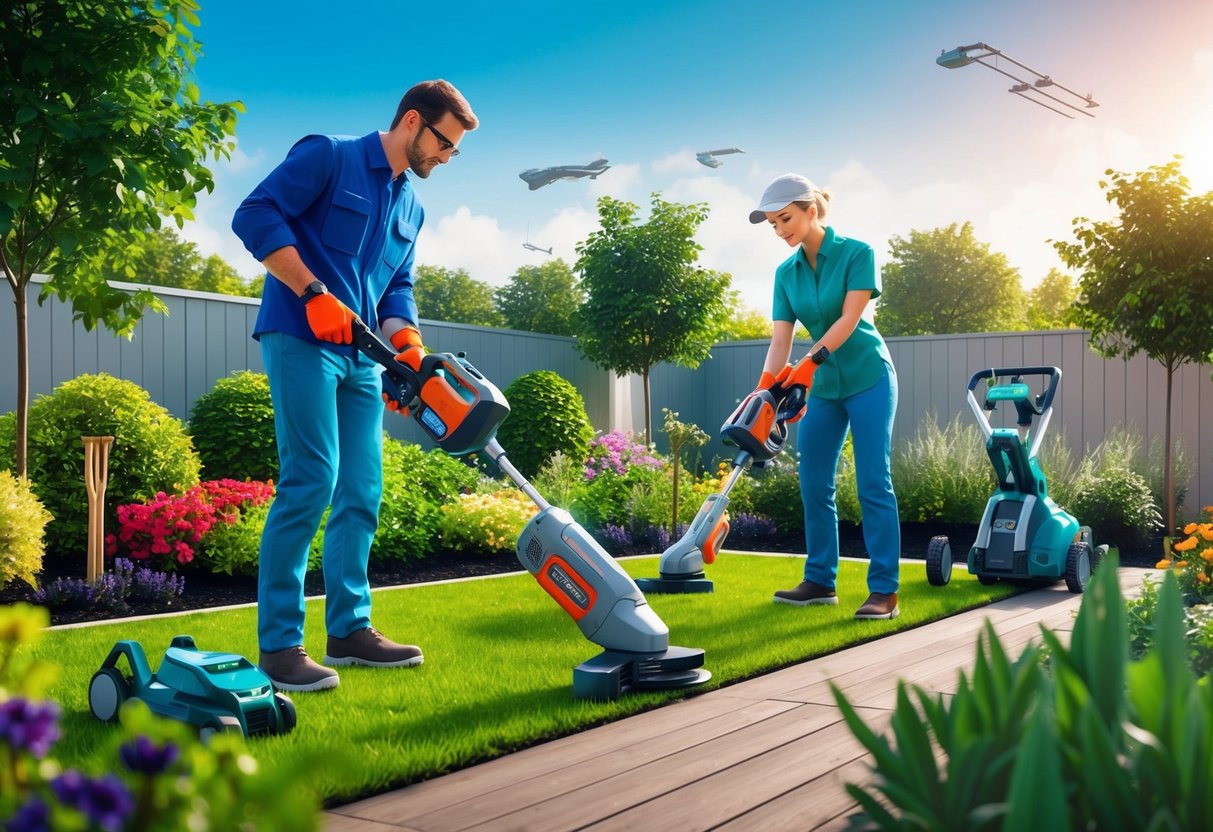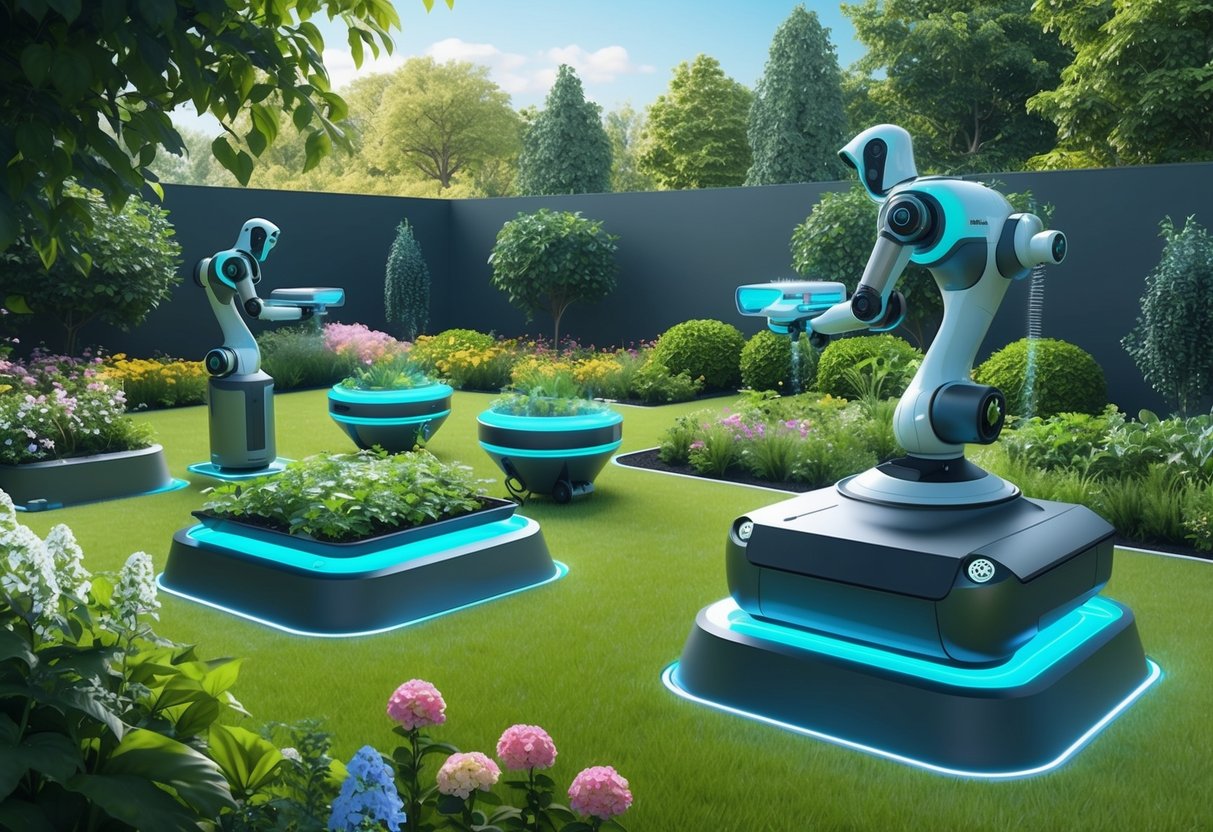
Cutting-Edge Power Tools and Accessories

The newest generation of high-tech power tools is transforming how people approach gardening projects. From precision drills and trimmers to specialized tool accessories, these innovations are driving efficiency and improving outcomes for both beginners and experienced gardeners.
Smart Drills and Trimmers
Smart garden drills now include variable speed controls, brushless motors, and digital torque settings for precise work on different soils and roots. Leading manufacturers like Bosch power tools offer cordless garden trimmers with lithium-ion batteries, allowing users to move freely around the yard without frequent recharging.
Automated features such as blade self-sharpening and overload protection extend tool longevity and reduce maintenance. Some models come with integrated apps, displaying battery levels and optimal cutting modes directly on a smartphone.
Quick-switch attachments let users change from drilling to cultivating with a single tool, increasing versatility. Enhanced ergonomics, lighter builds, and anti-vibration designs reduce fatigue during long sessions.
For those who maintain both lawns and garden beds, adjustable trimmer heads help reach tight corners or shape hedges accurately. Users consistently rate these innovations highly for saving time and achieving cleaner results compared to manual tools or older electric versions.
High-Tech Power Tool Accessories
Modern gardening demands accessories that optimize performance and comfort. Universal battery banks now support several power tool brands, allowing gardeners to swap batteries between drills, saws, and hedge trimmers without compatibility issues.
This reduces downtime and storage needs. Advanced cutting blades are made from tempered steel or titanium coatings, providing longer life and sharper cuts.
Smart attachments like soil moisture sensors, digital depth gauges, and wireless charging stations integrate seamlessly with existing sets. Gardeners can track their tool’s performance or receive real-time feedback via mobile apps.
Upgraded carrying cases offer impact resistance and organized storage for all accessories. Some manufacturers include quick-release systems for effortless attachment swaps, increasing productivity.
Quality accessories play a significant role in supporting the rapid pace of innovation seen in today’s gardening power tool market.
Integration of Artificial Intelligence in Gardening

Artificial intelligence is now a core part of high-tech gardening, providing personalized support and real-time insights to home gardeners. These systems often combine advanced connectivity with intuitive software interfaces, helping users monitor, automate, and optimize plant health and garden efficiency.
AI-Powered Plant Care Assistants
AI-driven plant care assistants have become an essential tool for tech-savvy gardeners. These systems analyze data from sensors placed in the soil and surrounding environment to monitor moisture levels, sunlight exposure, and nutrient content.
The results are delivered via user-friendly apps, which often provide tailored recommendations for watering, fertilizing, and pruning. Homeowners benefit from hands-off management because AI evaluates environmental data and suggests precise adjustments to daily routines.
For example, some platforms integrate local weather forecasts and growth data to optimize irrigation schedules and resource use, reducing waste and boosting yields. Many of these high-tech solutions are developed by teams of software engineers, ensuring that the software remains up-to-date and secure.
Devices powered by artificial intelligence can even alert users to sudden temperature changes or upcoming weather risks. For more details on efficiency and precision, see how AI-powered gardening systems optimize resource allocation and cultivation.
Automated Weed and Pest Detection
Automated weed and pest detection tools use artificial intelligence to monitor garden beds and plantings for unwanted invaders. These systems rely on cameras, sensors, and sophisticated image-recognition algorithms to identify specific species of weeds or pests in real time.
When a threat is detected, gardeners receive instant alerts through connected devices or specialized apps. By identifying issues early, these systems enable targeted action, often before a problem becomes widespread.
The effectiveness of AI-driven detection has improved in recent years thanks to advances in software and the expertise of software engineers, allowing the technology to distinguish between beneficial and harmful species. Some tools can also connect to automated sprayers or robotic weeders, reducing manual labor and minimizing chemical use.
To explore how AI transforms garden maintenance, visit this guide to AI-assisted plant health and precision gardening.